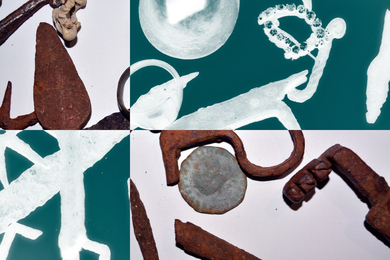��������� Professor of Biology H. Robert Horvitz has been named this year's recipient of the $100,000 March of Dimes Prize in Developmental Biology, awarded May 15 in Boston. The prize is awarded to investigators whose research has profoundly advanced the science that underlies understanding of birth defects.
Dr. Horvitz, a Howard Hughes Medical Institute investigator, was honored for his pioneering work in revealing genetic control over the active process of programmed cell death, or apoptosis. Physicians and scientists seek to control apoptosis with the hope of treating cancer, genetic birth defects, heart disease, degenerative diseases, spinal cord injury and other disorders. Clinical trials and pre-trials of new agents that either stimulate or prevent apoptosis are now underway at the National Cancer Institute and other institutions.
������
��������� Professor of Chemistry Alan Davison has been named a Fellow of the Royal Society, the United Kingdom's national academy of science founded in 1660 which represents the interests of top-quality science and technology in interactions with government, the public and the media. The organization funds research and international scientific cooperation, publishes journals, and produces statements and reports that provide advice to government and the public on key issues in science and technology.
Professor Davison, one of 42 new Fellows (six foreign members and one honorary member were also named) was recognized for his contributions in the field of organometallic and coordinated chemistry and, in particular, for the discovery of 99TcM-labelled myocardial imaging agents used in diagnosing heart conditions. Most recently his compounds have been approved for use as an improved tool for diagnosis of breast tumors.
������
��������� Brian Hemond of Lexington, an incoming member of the Class of 2004, was one of 40 finalists in the Intel Science Talent Search, a national high school science competition formerly sponsored by Westinghouse. He is the son of Harold Hemond, professor of civil and environmental engineering and head of the Parsons Laboratory. The competition took place March 8-13 in Washington, DC.
Brian earned a $5,000 scholarship for his botany project, "Electrical Potentials in Phaseolus, Phase II: The Streaming Potential Hypothesis," which could have applications in environmental research, forestry and agriculture. It examined the electrical charge flowing through the stems of certain plants, believed to cause a phenomenon known as streaming potential created by sap flowing through the stems and transpired as water vapor.
The Boston Globe also published an article about Brian and his project on February 6.
A year ago, Natalia Toro, then a 14-year-old high school senior from Boulder, CO and now a sophomore in physics at MIT, took the $50,000 top prize for research she did at MIT the previous summer under the supervision of Professor of Physics Edmund Bertschinger. She was the youngest student in the 58-year history of the program to win first prize. Keith Winstein, now an MIT freshman, won third place last year (see MIT Tech Talk, March 17, 1999).
A version of this article appeared in MIT Tech Talk on May 17, 2000.





